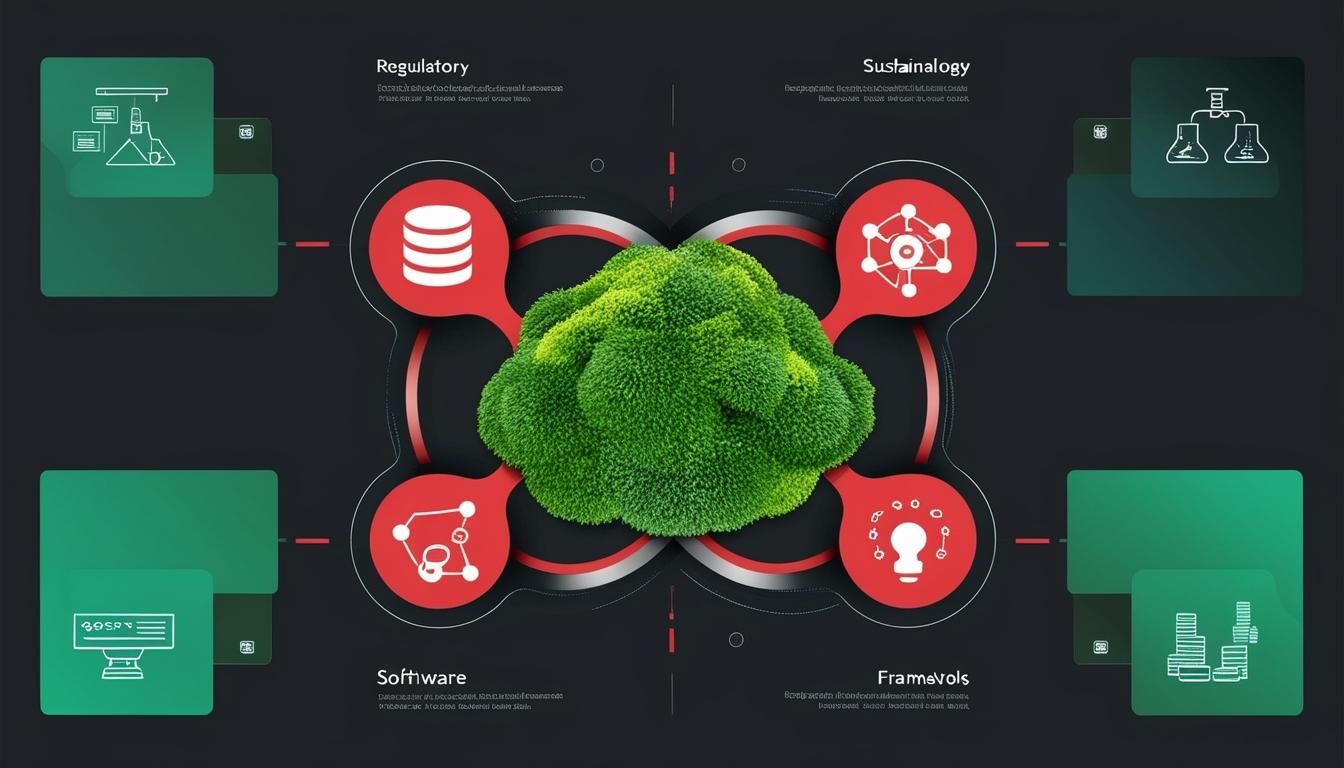As the intersection of technology and sustainability becomes increasingly vital for businesses and governments heading into 2025, discussions around the future of artificial intelligence (AI) and software practices are gaining traction. A significant focus is emerging around the environmental impact of software and the need for regulatory frameworks to guide this important aspect of technological advancement.
Currently, there is an absence of global regulations specifically targeting the environmental implications of software, a situation that persists despite a lack of consumer or investor pressure on companies regarding their green credentials. Santiago Fontanarrosa, vice-president of technology at Globant and author of "Green Software Engineering: Exploring Green Technology for Sustainable IT Solutions," highlighted Europe’s strong position to be a frontrunner in enacting regulations promoting green software practices. Fontanarrosa notes that Europe’s commitment to sustainability is evident through ambitious initiatives like the European Green Deal, and mentions that France is actively leading research in this area while Germany’s Blue Angel certification offers the first globally recognised eco-friendly software certification.
Fontanarrosa elaborates on the concept of green software, stating that it extends beyond development practices to include deployment and usage of applications. He drew attention to an alarming trend among developers, who, with advancements in computing power and storage, have become less concerned about resource optimisation. He observed, “Today, my iPhone has more computing power than the machine I used when I started working in the 1990s,” indicating a decline in efficient programming practices.
The efficiency associated with green software involves the energy consumed by a program to execute its functions, which can be optimised by minimising CPU and memory usage as well as reducing data transfer across networks. For instance, using event-based architectures rather than programs that continuously check for updates can drastically reduce network requests, hence conserving energy. Fontanarrosa emphasised the importance of thoughtful decision-making in software architecture, suggesting that developers can take into consideration optimal times for energy consumption, indicating that “the cloud is actually a big datacentre somewhere that consumes a lot of energy.”
Fontanarrosa provided concrete examples illustrating the significant influence software can have on carbon emissions. Dutch software expert Danny van Kooten calculated that a minor change to his WordPress plugins resulted in an impressive monthly reduction of 59,000 kg of CO₂, correlating it with multiple transatlantic flights. Furthermore, Fontanarrosa's book compares energy consumption between two implementations of the Fibonacci sequence, revealing that an iterative approach consumed 99.34% less energy compared to a recursive solution, highlighting how algorithmic choices can profoundly impact energy usage and emissions.
Despite the current lack of official green software regulations, advancements within the industry are ongoing. The Green Software Foundation, established in 2021 by tech giants like Accenture and Microsoft, aims to create trust and development standards for eco-aware software practices. The foundation asserts that the ICT sector will account for 14% of the world's carbon footprint by 2040, primarily stemming from smartphones and datacentres. While the foundation's Software Carbon Intensity (SCI) specification has recently achieved ISO status, it remains a voluntary standard rather than a government-mandated regulation. Fontanarrosa advocates for increased awareness of green software, encouraging individuals to explore resources like the Green Software Foundation's website and consider implementational changes that can lead to a substantial impact.
In parallel, the exploration of evolving technological trends is shaping the trajectory for sustainability and compliance in business practices. The future showcases an increasing reliance on agentic AI, which is envisioned to automate more routine decision-making processes, potentially taking over 15% of these decisions by 2028. This advancement is anticipated to enhance organisational efficiency by allowing teams to concentrate on strategic areas rather than daily operational tasks. Additionally, developments in spatial computing—including AR, VR, and mixed reality—are set to transform collaboration and workflow management across various sectors, notably in healthcare.
As the automotive sector embraces electric vehicles to mitigate greenhouse gas emissions and smart city initiatives leverage technology to optimise resource consumption, the need for robust regulatory frameworks grows. These frameworks will help navigate the complexities of compliance concerning data privacy and environmental impact as businesses adopt multi-cloud and hybrid solutions.
As technology evolves, ethical AI practices will be paramount in ensuring that these systems are developed and deployed responsibly, eliminating bias and enhancing accessibility. The need for collaboration across public and private sectors is evident, as stakeholders work together to share insights and implement innovative solutions to address the pressing challenges that arise from the intertwining of technology and sustainability.
Heading into the next few years, the synthesis of technology, sustainability, and compliance will fundamentally change operational landscapes, presenting new challenges and opportunities for businesses aiming to balance progress with environmental stewardship.
Source: Noah Wire Services
